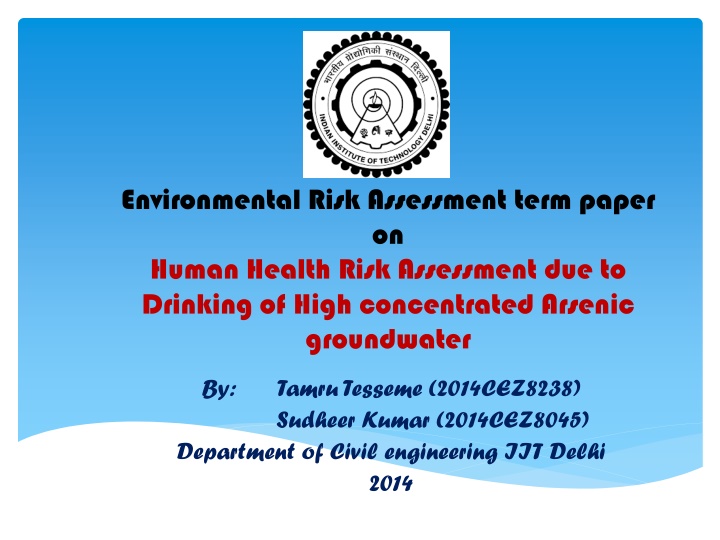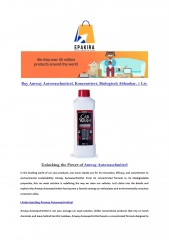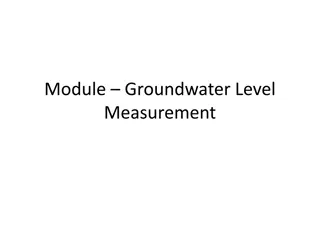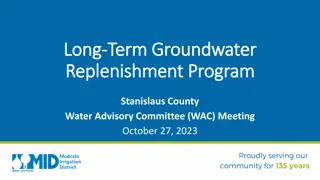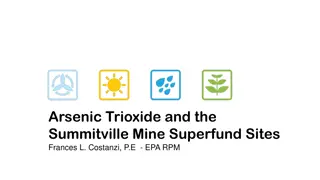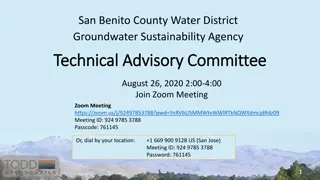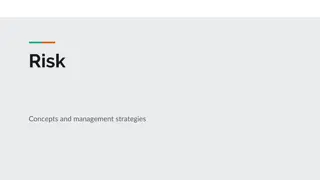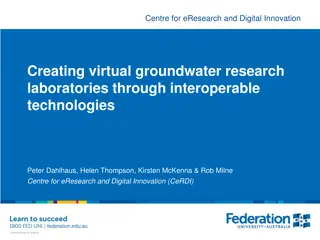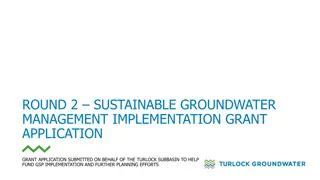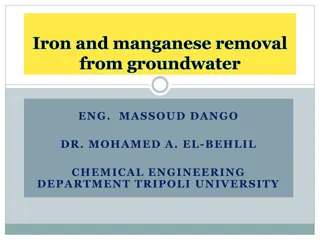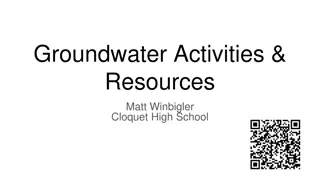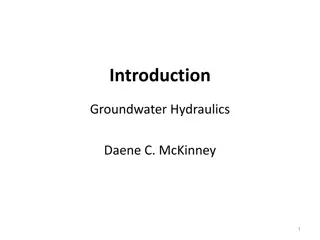Human Health Risk Assessment due to High Concentrated Arsenic in Groundwater
This term paper focuses on assessing human health risks associated with elevated levels of arsenic in drinking groundwater. Various exposure routes and sources of arsenic contamination are investigated, leading to a comprehensive risk assessment. The results indicate non-carcinogenic effects and potential carcinogenic risks due to arsenic exposure, emphasizing the need for effective risk management and remediation strategies to protect human health.
Download Presentation

Please find below an Image/Link to download the presentation.
The content on the website is provided AS IS for your information and personal use only. It may not be sold, licensed, or shared on other websites without obtaining consent from the author.If you encounter any issues during the download, it is possible that the publisher has removed the file from their server.
You are allowed to download the files provided on this website for personal or commercial use, subject to the condition that they are used lawfully. All files are the property of their respective owners.
The content on the website is provided AS IS for your information and personal use only. It may not be sold, licensed, or shared on other websites without obtaining consent from the author.
E N D
Presentation Transcript
Environmental Risk Assessment term paper on Human Health Risk Assessment due to Drinking of High concentrated Arsenic groundwater By: TamruTesseme (2014CEZ8238) Sudheer Kumar (2014CEZ8045) Department of Civil engineering IIT Delhi 2014
Introduction Arsenic certainly prevailing as one of the top twentieth abundant element in earth s crust. As per WHO drinking water quality guidelines standards the maximum concentration level of Arsenic in drinking water is 10 g/l. The presence of different forms of Arsenic in drinking water above the desired limit may be the cause of human health risks such as skin lesions, cardiovascular and haematological effects, and internal cancers.
Contd. The general objective of this term paper is a human health risk assessment due to an over concentration of Arsenic in drinking groundwater. The methodology used in this term paper for assessment of human health risk, based on Gerba risk assessment hand-out and using similar USEPAand WHO guideline issues.
Risk Assessment Receptor Pathway Exposure Route Source Ingestion Adult and Child resident Consumer product Inhalation Infiltration and percolation Source Dermal Ingestion Adult and Child resident Arsenic in Ground Water Drinking water Dermal From WWTP and Domestic waste Adult and Child resident Volatilization during Domestic use Air Inhalation
Results Parameter Arsenic (mg/l) Water intake (l/d) Base value 5 2 Range 0.0318-0.697 1.2-2.6 Sensitivity index 9.1x10 7.55x10 th - 90 th percentile -3 -4 Arsenic from secondary source: (domestic, industry, WWTP etc.). Arsenic in geological formation through infiltration and percolation Outcomes Consequence Non- carcinoge nic effects No, Success P1 P2 1 Arsenic over concentratio n P3 Non- carcino genic effects No, Success 2 Heavy metal contaminants No, Success 1-P2 Parameter Pathway As Cr Ni Pb Arsenic 1-P3 ADD Ingestion 0.02323 0.002977143 0.002074286 0.007548571 Yes, Failure Carcinog enic effects Hazard Quotients Ingestion 1.0955 0.1488 0.1037 0.3281 3 Yes, Failure Yes, Failure Hazard index (HI) = 1.67 1-P1 Carcinog enic effects Cancer Carcinogenic) risk ( Ingestion 0.0024 4
Risk Management and Remediation Management and remediation 1) of Arsenic from ground primary sources 2) Management and remediation arsenic from secondary sources Conclusion and Recommendation Arsenic in our study area above the limit and its values put in group1 carcinogenic health chemicals. Based the data obtained from Arsenic uncertainty analysis result; implementation water and management/remediation systems required to reduce concentration of Arsenic and its adverse health effects to human. human soil, risk air
